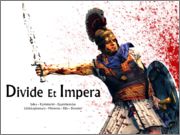
Common Weights & Measures
How much is a "handful" of grain, or of olives? Whose hand is used? Exactly.The science of measurement, metrology, was invented by the Egyptians during the Bronze Age. Its creation was inspired by a lust for money as Pharaoh Sesostris wanted to measure and tax his subjects' arable land. Units of measurement were typically based on parts of the human body or a man’s capacity: the digit, palm, foot and pace for example. Not surprisingly there were many local variations, but as trade between cities and states increased there were attempts to introduce standard quantities of everything. The Greek king Pheidon is widely recognised as the creator of the first set of agreed common weights and measures.
 |
Node Set Culture Tier 3 |
research_points 900 |
cost_per_round 0 |
Effects
- +2 public order (all provinces)
- +10% tariff income from trade agreements
- +1 cultural conversion
| Requires | |
|---|---|
| Requires Technologies |
|
| Enables | |
|---|---|
| Enables Technologies |
|
| Enables Buildings |
|
|
|
|
|
|
|


 Français
Français Italiano
Italiano Deutsch
Deutsch Español
Español Русский
Русский Čeština
Čeština Polski
Polski Türkçe
Türkçe 简体中文
简体中文 正體中文
正體中文 日本語
日本語








